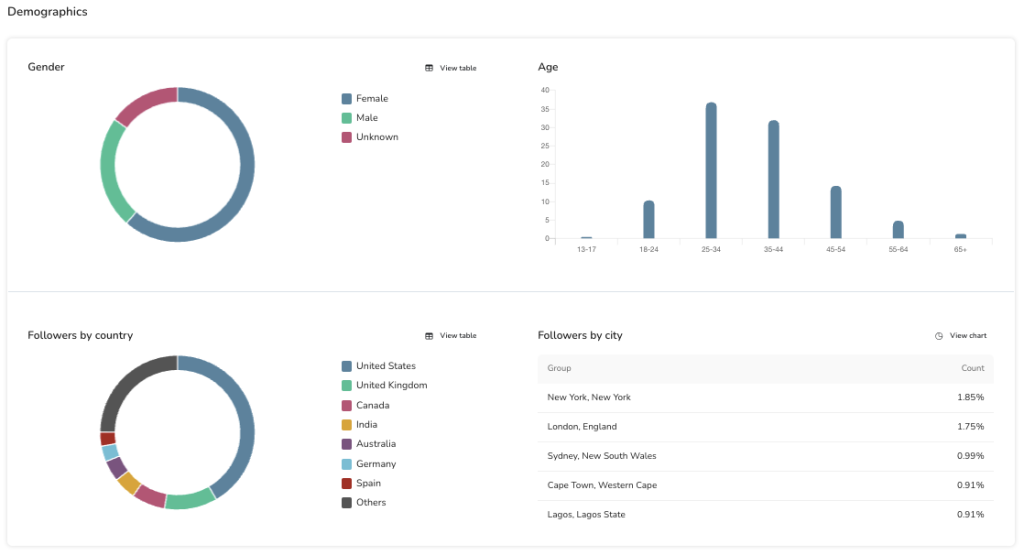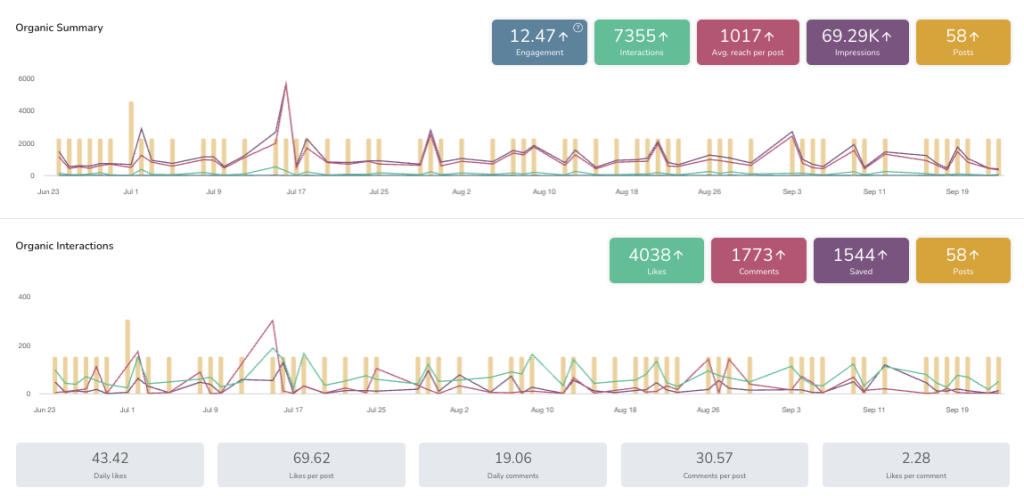How to Create an Influencer Media Kit

Media kits act as creator and influencer portfolios – highlighting their scope of work, achievements, and offerings. When locking down brand deals, influencer media kits explain the strategy and results behind the content, ultimately helping brands determine if the partnership is a good match. This article will explain how to create an influencer media kit, with the essential elements, information, and metrics to include.
A fruitful partnership depends on how the influencer and brand mesh, ensuring their goals and objectives are aligned. This is a two-sided street – where both parties feel valued and coordinated. How can you find the right influencers to work with? Check out this post to grasp an understanding:
Free Influencer Media Kit Download
What is an Influencer Media Kit?
An influencer media kit can be defined as a professional portfolio showcasing an influencer’s content niche, audience, past partnerships, and performance metrics. Some media kits include pricing – whether a la carte or packaged.
Media kits should reflect the influencer’s “brand” and describe their expertise. Passions can even place influencers as thought leaders in this niche. Influencers should always include contact information and social media accounts for the brand to reference.
This can be presented in multiple ways: a slideshow, PDF, portfolio website, etc. That being said, media kits are the influencer’s creative way of pitching their work to potential clients. There are no specific rules to how media kits should be organized. However, we recommend that influencers tailor their media kits per client, to create a more intimate and beneficial partnership.
Essential Elements for an Influencer Media Kit
Determining what information to include in this media kit is the hardest part. Similar to a resume or portfolio, you want to present the work you’re most passionate about. Supporting your experience with metrics will validate your work, and help brands compare with their goals.
Account information
The beginning section displays the main information of the social media profiles you intend to influence. This should describe the profile, the creator’s goals, and an image to complement.
Audience details and performance metrics
Next, present your audience demographics and following. The first three metrics mentioned are vital for a media kit, while the others are optional. Here is the full list of metrics to consider including:
Followers
While followers are more of a “vanity” metric, this is important to help the brand compare with its objectives. Metricool’s community metrics show your daily followers and average followers per post.
Age range & gender percentage
The age range and gender split of your profiles help brands strategize their content messaging, and the influencer to brainstorm authentic integrations. Metricool’s profile demographics section includes the gender percentage, age ranges, followers by country, and city.

Engagement rate
A profile’s engagement rate shows how interactive your audience is with your content. Metricool’s analytics also provide the engagement rate and evolutions for all content types. This metric is calculated by total interactions divided by the total number of followers multiplied by 100, producing the percentage of audience engagement. Including this metric in a media kit helps the brand understand realistic expectations.
Impressions
Impressions measure how many times your content has been displayed to users. The more impressions, the more your content is well received, shared, and prioritized by the network’s algorithm.
Interactions
Consider including your interactions to advertise a highly engaged audience. This takes into account all interaction types based on the network’s options.
Average daily reach
While this measurement may not be the most common, the more data, the better. Metricool’s analytics shows your average reach per day. Consider adding this to the media kit for more justification.
Metricool’s analytics offers an organic summary section, displaying the engagement rate, interactions, impressions, average daily reach, and a breakdown of the interactions per type.
Below you can also see your average daily likes, likes per post, daily comments, comments per post, and likes per comment. This data goes into even more detail and can be interesting to display on your media kit.

Content showcase
Now is the time to show off your content creativity and specialties. We recommend promoting a mix of media options, featuring your content diversification. This gives brands a better understanding of how to strategize multiple content pieces.
Depending on the profiles you aim to influence, consider adding an image or carousel post, video content, and a text-heavy post. Alternatively, share content that has different strategies to drive results.
Select content that summarizes your content creation talents as a whole, and has generated positive results. Consider choosing content that would align with the specific brand.
Offerings
Partnership offerings and pricing can include a list of a la carte deliverables, or package options. We suggest disclosing pricing so brands can budget accordingly. How the pricing is determined is ultimately up to the influencer. Some may add hourly rates or sum pricing.
Contact information
Finally, add your preferred contact method. More than likely this will be your email address, however, it can include your phone number as well. If you work with a management team, disclose this information and their contact.
Tips to Make Your Media Kit Stand Out
Now that you have the basics of your influencer media kit nailed down, how can you make it stand out from other creators? Here are some tips to make your portfolio pop.
Stay on your personal brand
As a creator, your personal brand exemplifies your vision, mission, and visual identity. The media kit should be consistent with your tone of voice and design. This should reflect who you are as a person, while presenting your unique professional value. If you’re wanting to enhance your personal brand, read this guide:
Tailor the media kit to the brand you’re pitching
Each brand partnership will be different, therefore, you should tailor your media kit to align with what this brand is looking for. The content showcase section should include similar examples to their industry, audience, or products. This is more likely to land a partnership where brands feel aligned with your work.
Highlight the work you’re most proud of
As mentioned earlier, you should highlight the campaigns and work you’re most proud of, that produced influential results. When communicating with brands, they may ask more questions about previous campaigns. This is where the passion and strategy behind the work can shine, allowing you to further connect with the brand.
Exemplify influential campaigns and partnerships
Lastly, share the results and previous partnerships that cultivated positive campaigns and brand partnerships. Brands can analyze the results, and understand what it is like to work with you as a partner. Use our ROAS influencer marketing calculator for free to prove the value of investing in you as an influencer.

